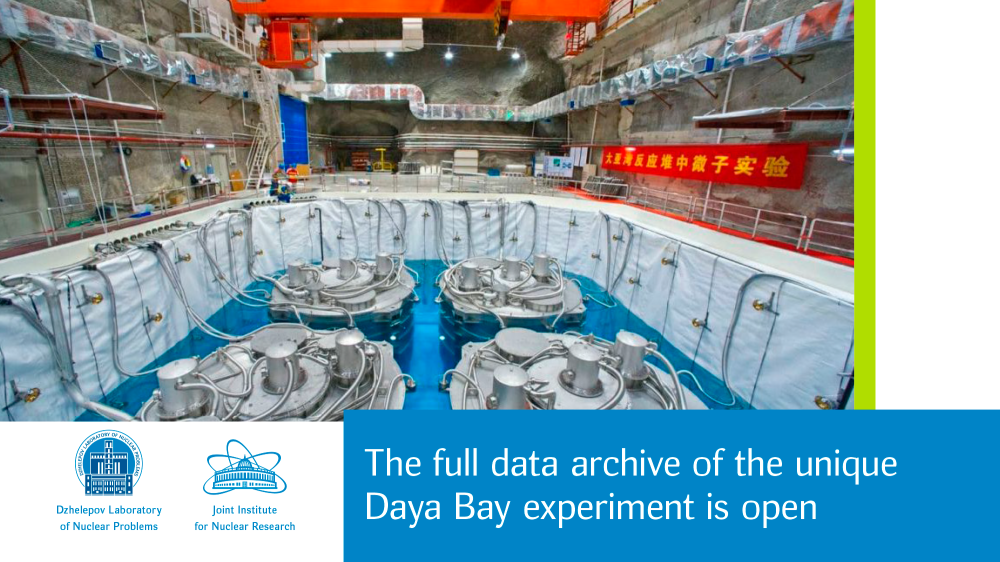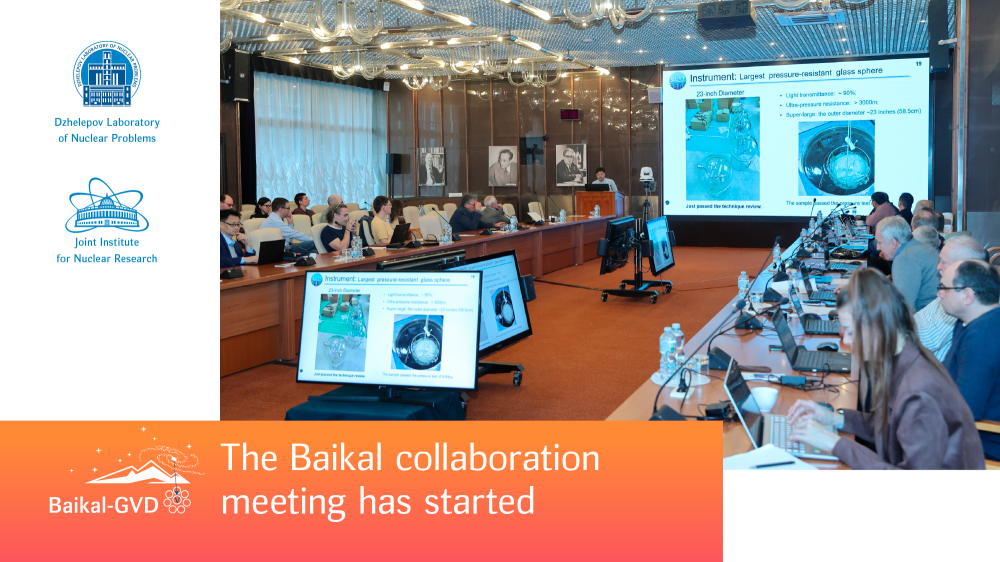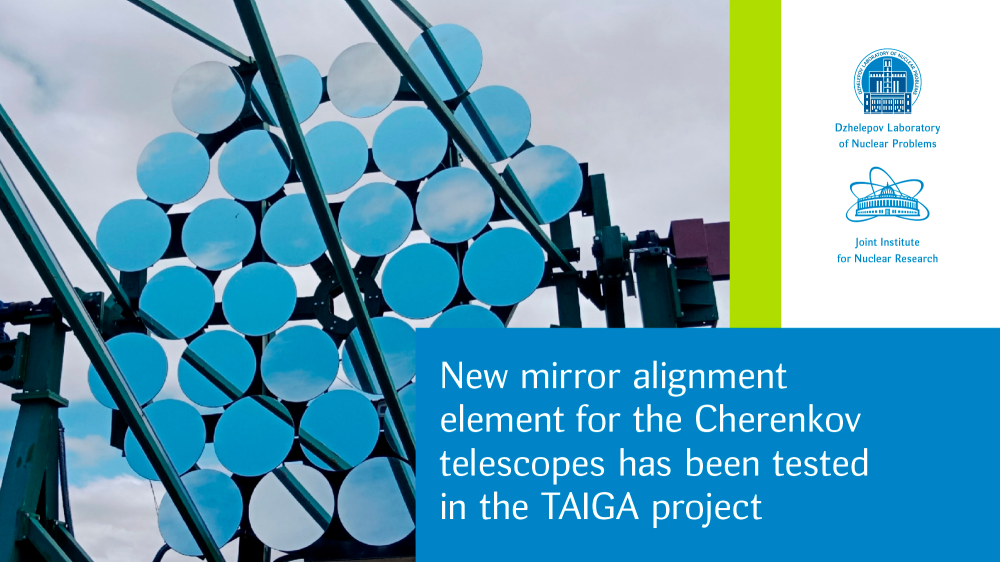2022 MONUMENT Data Taking Run in Switzerland
A regular data taking run of the MONUMENT experiment has been finished at the Paul Scherrer Institute (PSI) in Switzerland. The DLNP group was involved in the run. This year, it started in mid-September, lasted almost a month and a half, and included both online and offline measurements (later, targets removed from the beamline with the produced activity were measured at a radiochemical laboratory).
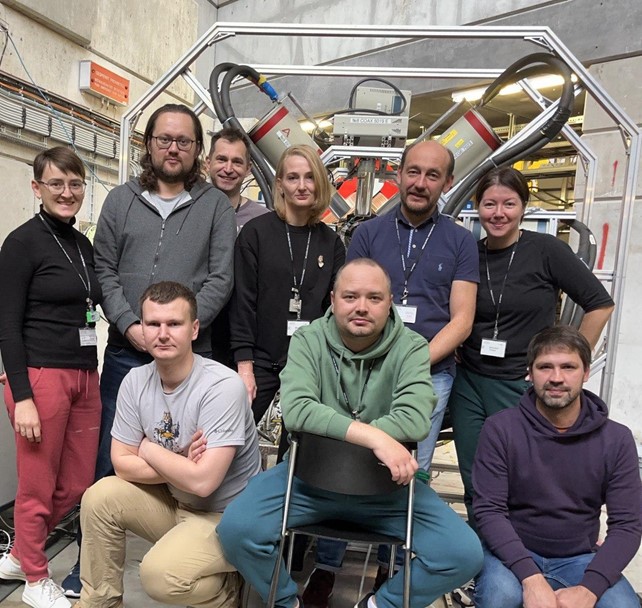
Measurements were made within a general project on determining matrix elements for the double neutrinoless beta decay. In this case, the neutrino mass is determined from the probability (lifetime) of the process using the formula:
$\Gamma_{ββ}^{0ν}=\frac{1}{T_{ββ}{0ν}}=G^{0ν} \cdot {|M^{0ν}|}^2 \cdot ⟨m_{ββ}⟩$,
where $G^{0ν}$ is the phase space volume, $⟨m_{ββ}⟩$ is the effective Majorana neutrino mass, and $T^{0ν}$ is the half-life of a corresponding isotope.
As follows from the formula, the knowledge of the matrix elements $M^{0ν}$ of the transition between the initial and final state of the nucleus is needed for accurate mass determination. Note that the transition proceeds in two phases via a virtual state of a compound nucleus. The second phase per se (transition from a virtual intermediate state into a daughter nucleus) resembles a lot a reversed mu-capture (the same change of nuclear charge, a large momentum transfer). That is why, measurements of any characteristics of this process to check nuclear models and to increase the accuracy of theoretical calculations seems to be helpful.
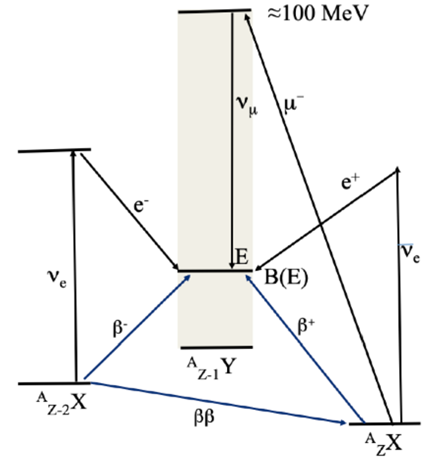
Two phases of the double beta decay and their connection to the mu-capture
Thus, $^{136}$Ba measured within the experiment is the daughter nucleus for $^{136}$Xe used in several experiments on the double beta decay, and $^{76}$Se is the one for the isotope $^{76}$Ge used in LEGEND, one of the most perspective experiments in the field of the double neutrinoless beta decay, in which our scientists are also actively involved. Also, enriched $^{100}$Mo and $^{nat}$Mo were measured this year. The measurement of this isotope is connected to the study of the neutrino role in the formation of supernovae and synthesis of heavy isotopes inside of them. The idea of collecting additional experimental data was supported by the European Consortium on Astrophysics and Particle Physics. Its recommendations highlighted the role of experimental measurements in increasing the accuracy of theoretical calculations in the double neutrinoless beta decay.
The first test run of the upcoming experiment was performed in the μX collaboration in 2019. A three-year programme on measurements with the low-energy muon beam πE1 was approved by the PSI Programming Committee. This year’s run is the second of those three scheduled.
The head of the project Dania Zinatulina, Cand. Sci. (Phys.-Math.), comments the measurements, “Despite the obvious difficulties when implementing international projects, our team did not hand over the project management to foreign colleagues. We participated in the project in full force. I would like to thank the guys for their well-coordinated and even selfless involvement, sometimes during 12-14 hours per day, including night shifts.”

The team of the DLNP Experimental Department of Nuclear Spectroscopy and Radiochemistry next to the experimental facility
Noteworthy is the crucial role of the JINR staff in the project. Our colleagues were involved in all stages of implementation — from manufacturing the measuring facility to obtaining and analyzing of final data.
The project was initiated by DLNP, and today, the major part of activities is performed by the DLNP staff. The MONUMENT project is a significant constituent of a wide programme on studying the processes of the double beta decay being under implementation at the DLNP Experimental Department of Nuclear Spectroscopy and Radiochemistry. This programme includes calorimetric and track calorimetric spectrometric studies both of the two-neutrino mode of the decays $2 \nu 2 \beta$, $2 \nu 2 EC$, including decays into excited states, and of the search for the neutrinoless decay $0 \nu 2β$ which is of a special interest for modern physics.


